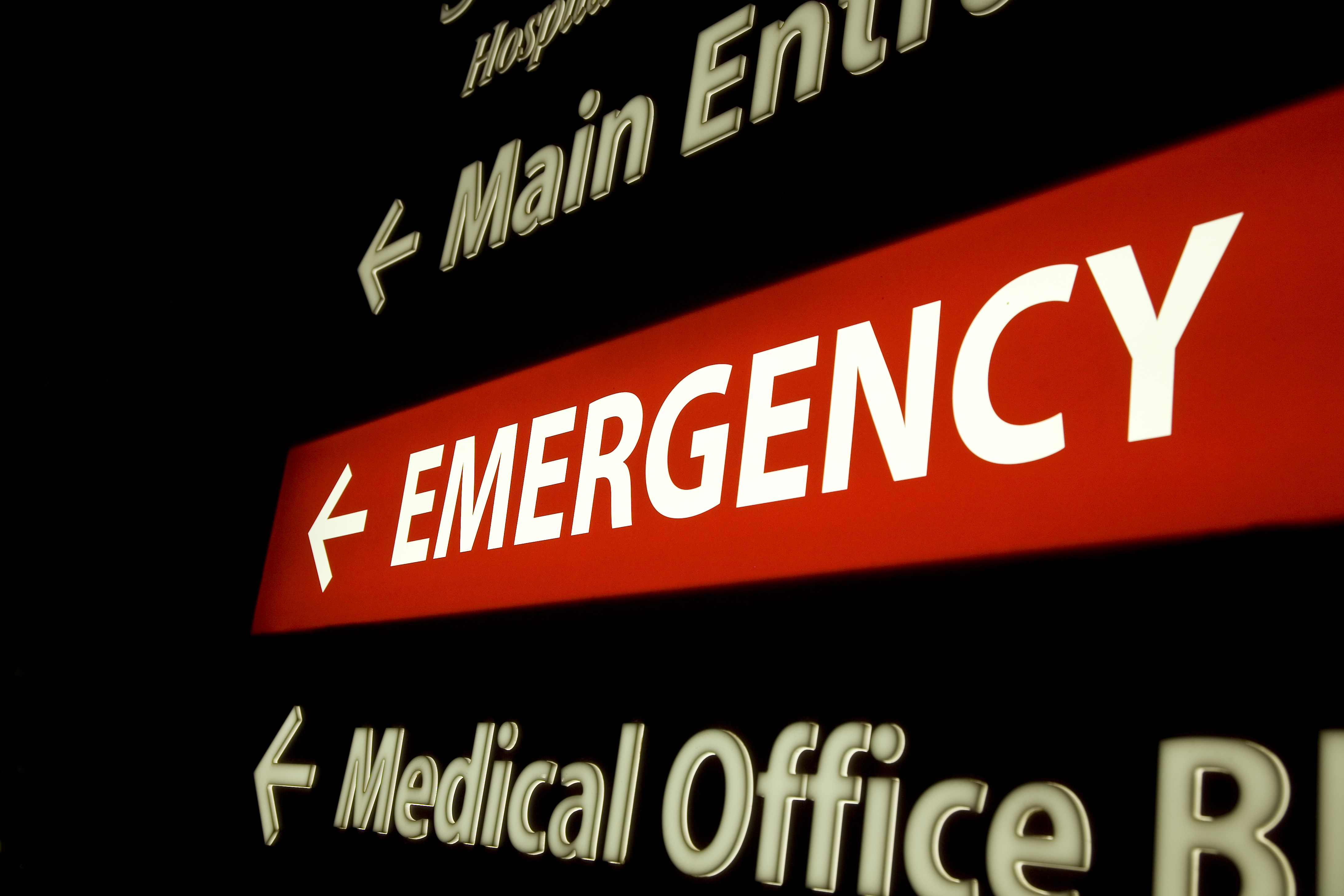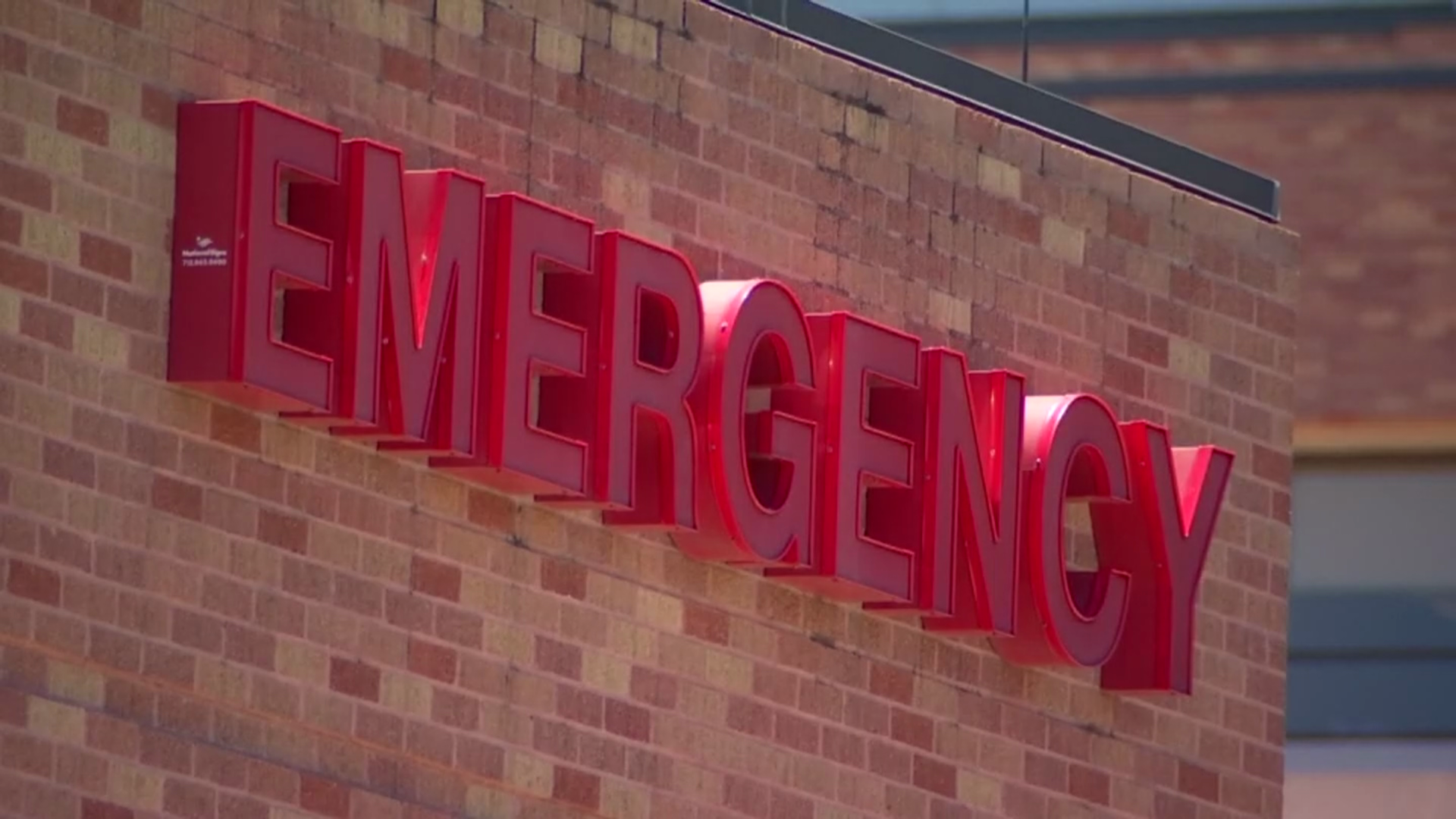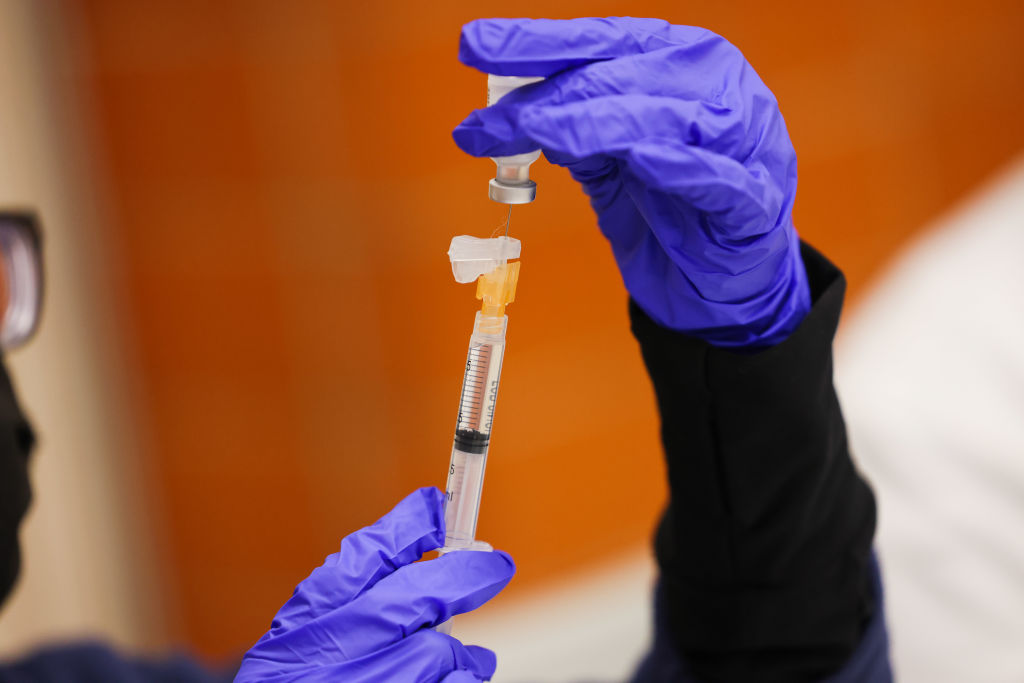What to Know
- Gov. Kathy Hochul continues to push vaccinations and testing as the state battles its worst COVID-19 wave in a year; still, she said Friday she was hopeful NY is seeing the first signs of the start of a plateau
- Hospitalizations are the highest since April 2020 but don't tell whole story; 37% of admitted NY COVID patients have no symptoms and one CEO says it's "very, very rare" to see a boosted patient admitted
- In New York City, half of hospitalized patients diagnosed with COVID were admitted because of the virus; the other half were admitted for something else and found to have COVID during routine testing
New York Gov. Kathy Hochul says she is "cautiously optimistic" about COVID case trends that show a slowing rate of growth for the first time since the state reported its first confirmed case of the omicron variant on Dec. 2.
The head of the CDC, meanwhile, said the same day she doesn't think the United States has hit omicron's peak yet. But that could happen sooner than expected if the numbers in New York this week are any indication of what might come next.
Hochul reported 82,094 new COVID cases on Friday, which is a drop of a few hundred from a day ago and about 3,300 positives shy of the single-day pandemic record of 85,476 she reported on New Year's Day.
More than one in five New York COVID tests are coming back positive these days, and the city's seven-day rolling average for positive tests is currently one in three. The trends in new cases are a bit muddy, though, given the impact of holiday testing gaps, the still-unknown effect of related travel and general lags in reporting.
"We're not going to make any pronouncements other than that is a better trend line than we have been seeing up until now. Every day that we can flatten that is going to be a good day," Hochul said, adding that the state was hoping for a plateau.
Get Tri-state area news delivered to your inbox. Sign up for NBC New York's News Headlines newsletter.

A quick look at New York City's case trends shows what appears to be a downtick in new cases, but the data is behind by four days. That blip on the seven-day average could reflect lower COVID testing numbers around the holidays rather than the first indications of omicron's decline -- or maybe not. Time will tell.
At the same time new cases slow from the exponential increases -- doubling daily in New York City at times -- the two lagging indicators, the ones about which officials are most concerned, hospitalizations and deaths, are rising considerably.
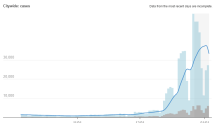
That has happened in nearly every wave of the pandemic so far. The governor reported 155 new COVID deaths on Friday, the highest single-day toll since the mass vaccination rollout and a 25-fatality increase over the prior recent high of 130 she revealed just a day before.
Hospitalizations stand at 11,548 statewide as of Friday, the highest total since April 29, 2020, and mark a nearly 500-patient increase over the last day. Nearly half of current admissions are in New York City.
"It's still a number that's very high. If this correlates properly to our number of cases then hospitalizations should start to see the beginnings of a plateau," Hochul said.
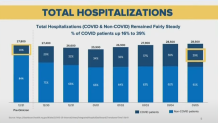
The balance of COVID patients in New York hospitals as a share of the total has doubled since just before Christmas, state data shows, but those ratios alone do not tell the whole story. Forty-two percent of hospitalized COVID patients weren't admitted because they were positive for COVID, state data shows.
They were admitted for another illness, tested as part of the routine admissions process and found to be positive for COVID. COVID still accounts as the primary diagnosis for hospitalized patients with the virus across the state (58% vs 42%), but a high relative share of people in the hospital with COVID didn't go there because of it. That suggests the milder nature of omicron versus earlier variants, especially -- again -- when it comes to people who are fully vaccinated.
Manhattan emergency room Dr. Craig Spencer touched on that element in a lengthy Twitter thread earlier this week, when he said that with omicron, "people are getting really sick in a different way" -- as in they come to the hospital because they're sick from an underlying illness -- and then they got COVID on top of that.
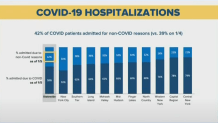
It's not an all-out wave of omicron patients, he and others say. And that's playing out in different ways across New York.
New York City, for example, where the split is most notable at 50-50, has the second-highest adult full vaccination rate (84.3%) of the state's 10 regions behind only Long Island (86.6%), where one of the two county executives has been warring with the state over mask and other enhanced COVID protocol as of late.
Vaccination rates among children, whose hospitalization rates soared statewide in New York last month, vary more widely. More than 19.4% of NYC kids aged 5-11 are fully vaccinated, as are 71.8% of kids aged 12 to 17. On Long Island, those numbers are 16.2% and 64.6%, respectively.
Hochul called that a "very interesting snapshot" of what she's seeing across the state. Thirty-seven percent of current state COVID hospitalizations are asymptomatic, the governor added.
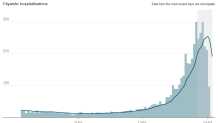
That jives with two days of data (Monday and Tuesday) that Northwell Health's senior vice president and physician-in-chief Dr. David Battinelli shared with News 4 on Thursday. Of 48,000 COVID tests conducted across its network those two days, 36% came back positive. Half of those positives were asymptomatic, Battinelli said.
He has reported seeing what appear to be the first signs of new COVID admissions "leveling off" across Northwell's hospitals, while other administrators grapple with record emergency room visits, a dichotomy that perhaps at least in part reflects varying vaccination rates as omicron's stranglehold on the country tightens.
Northwell, the state's largest healthcare provider, serving the city, Long Island and Westchester, is seeing its 19 hospitals discharging at a rate close to admissions, indicating shorter patient stays, as new hospitalizations appear to be plateauing, according to Battinelli. He says Northwell admissions are up 505 week-over-week but have started to plateau in recent days, which he called a hopeful sign.
About 9% of the roughly 1,580 hospitalized patients are in ICUs. That compares with well more than half of hospitalized patients in ICUs at the height of the crisis in spring 2020, Battinelli said. The vast majority of those hospitalized are unvaccinated or "under-vaccinated," meaning they haven't completed their series.
The CEO of New York-Presbyterian Hospitals, Dr. Steven Corwin, said Friday his system has about 1,200 current COVID admissions, which he said is representative of most downstate hospitals. It's about 20% higher than where his system was this time last year, but the numbers of patients in ICUs and on ventilators are significantly lower, similar to what Battinelli said of Northwell.
"Of the cases in the hospital, about 50% are admitted with COVID and about 50% admitted for COVID," Corwin said. "Of the patients in the hospital, about 50% are unvaccinated or partially vaccinated and about 50% have two doses of the vaccine. It's very, very rare to see somebody admitted who has had a booster."
More Coverage
Ultimately, fatalities will likely rise as a default consequence of the soaring hospitalization rates, but the milder nature of omicron vs. delta, along with the power of vaccinations to prevent severe illness and death, should mitigate the increases. And some of those who die may not be dying primarily of COVID at all.
Public health experts have said they don't expect this latest COVID wave's peak until February, though they acknowledge the virus' unpredictability.
The head of the CDC says there certainly could be a rapid down-surge instead of a slow easing of cases, given how omicron has played out in countries that it hit first, like South Africa. But she doesn't think the U.S. is at that point just yet.
"The number of cases are rising faster than the number of hospitalizations and deaths, although we’re now starting to see the number of hospitalizations rise as well," Dr. Rochelle Walensky told NBC's "TODAY" in a Friday interview. "The way it has peaked in other countries, in South Africa, it has come down rapidly as well, but I don’t believe we’ve seen the peak yet here in the United States."
"I will say that our hospitals right now are full of people who are unvaccinated and that you are 17 times more likely to be in a hospital and 20 times more likely to die if you’re unvaccinated compared to if you’re boosted," she added. "There’s a lot we can do in this moment, getting vaccinated, getting boosted. We have 99% of our counties in high transmission, wear your mask in public indoor settings."

